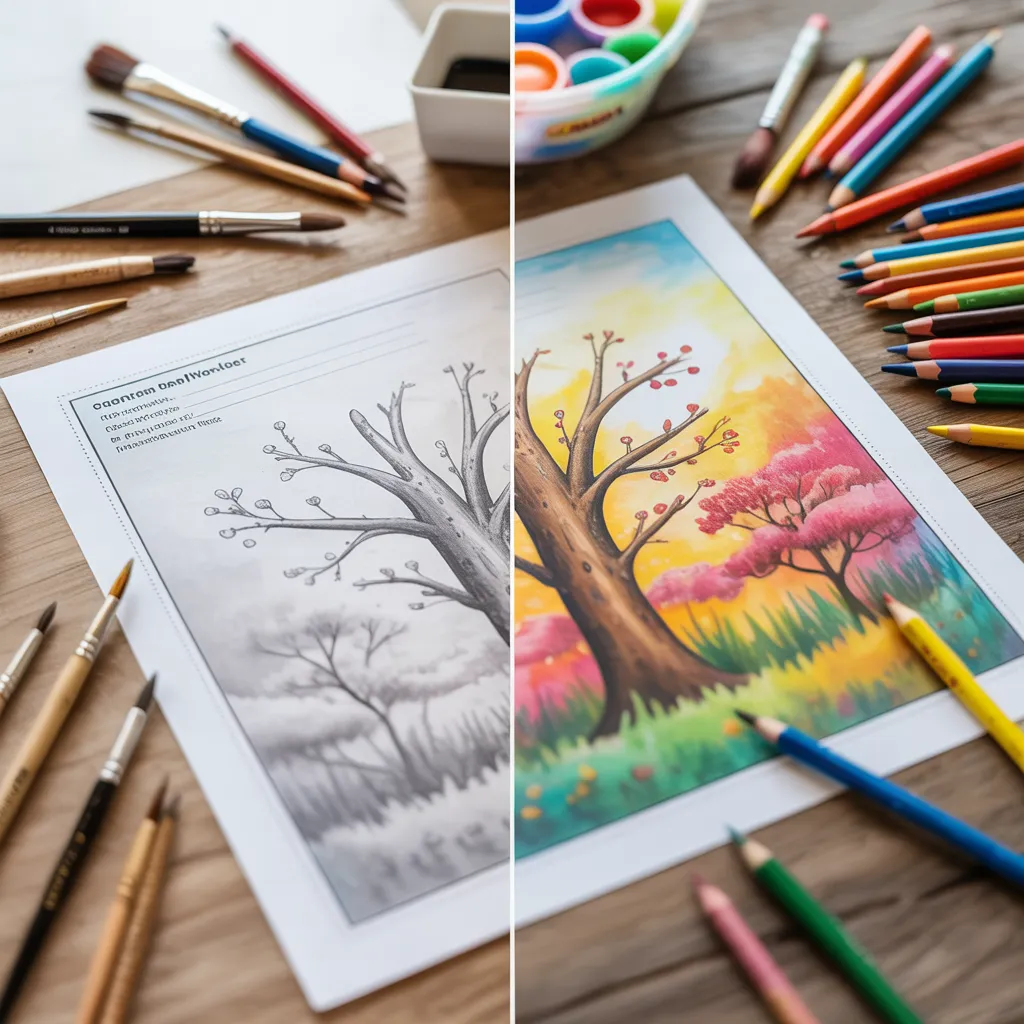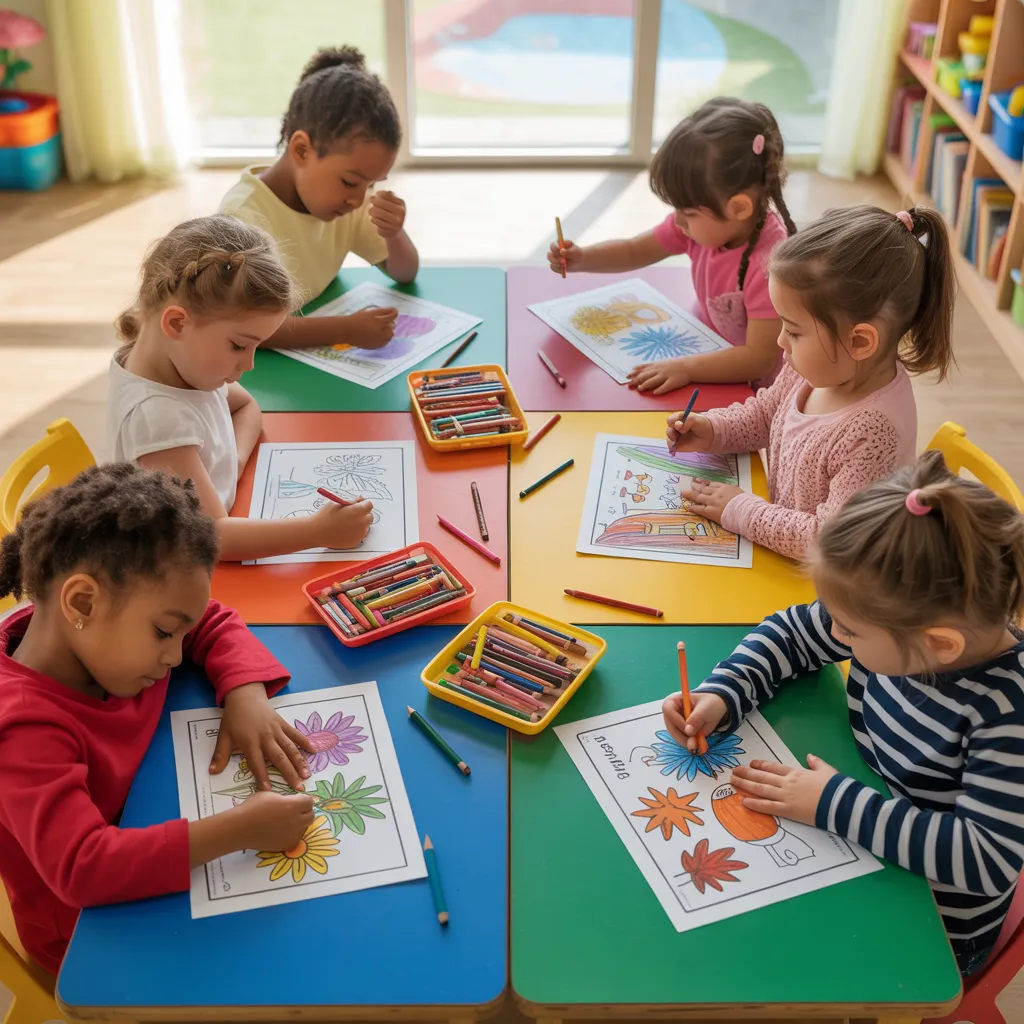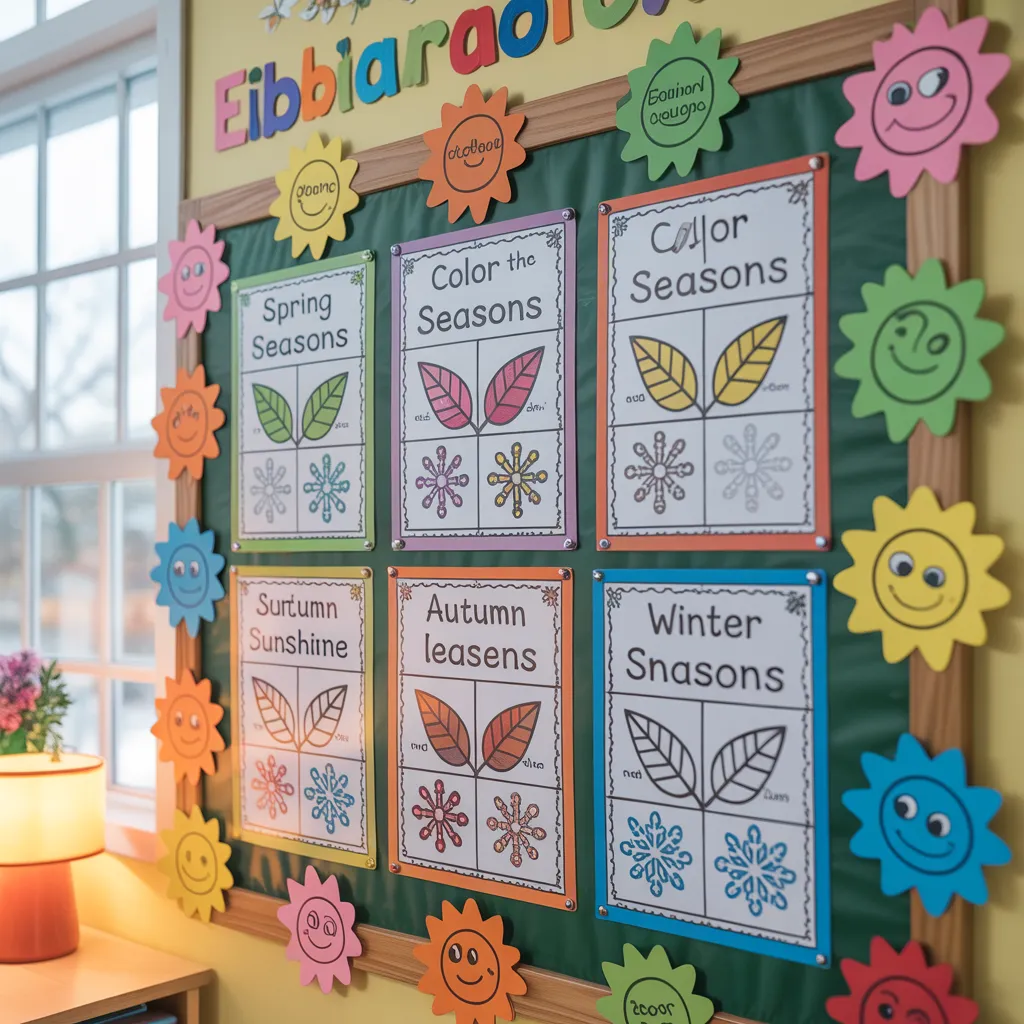Color the seasons worksheets represent the perfect fusion of artistic creativity and educational learning, transforming ordinary classroom time into engaging seasonal adventures. These specially designed educational tools help children explore the natural world through hands-on coloring activities that teach everything from weather patterns to animal behaviors throughout the year. Unlike traditional worksheets that focus on single subjects, seasonal coloring activities integrate science, art, vocabulary, and observation skills into one comprehensive learning experience. Teachers and parents have discovered that these versatile resources capture children’s attention while building essential academic skills naturally. From preschoolers learning basic seasonal concepts to elementary students exploring complex environmental changes, these worksheets provide scaffolded learning opportunities that grow with each child’s developmental needs and interests.
The Science Behind Color the Seasons Worksheets

How Seasonal Learning Supports Child Development
Color the seasons worksheets tap into children’s natural curiosity about the world around them while supporting crucial developmental milestones. Research demonstrates that seasonal learning activities help children develop temporal awareness, understanding cause-and-effect relationships, and recognizing patterns in nature. When children color autumn leaves changing from green to orange, they internalize the concept of transformation and seasonal cycles.
These activities also strengthen fine motor skills essential for writing readiness. The precise movements required to color within lines, select appropriate colors, and complete detailed seasonal scenes build hand-eye coordination and finger strength. Additionally, seasonal coloring supports cognitive development by encouraging children to make connections between colors, weather, activities, and time periods.
Building Environmental Awareness Through Art
Seasonal worksheets naturally introduce children to environmental science concepts in age-appropriate ways. Through coloring activities, young learners discover how plants adapt to changing temperatures, why animals migrate or hibernate, and how weather patterns shift throughout the year. This early exposure to environmental concepts builds foundation knowledge for more advanced science learning.
Children who regularly engage with color the seasons worksheets often demonstrate stronger observational skills in their daily lives, noticing seasonal changes in their neighborhoods and making connections between their learning and real-world experiences.
Educational Benefits of Color the Seasons Worksheets
Academic Skill Integration
These versatile educational tools support learning across multiple subjects simultaneously. Science concepts emerge naturally as children color weather patterns, plant life cycles, and animal adaptations. Mathematical skills develop through counting seasonal objects, identifying patterns, and comparing quantities across different seasons.
Language arts benefits include vocabulary expansion with seasonal terms, descriptive writing opportunities about colored scenes, and reading comprehension through worksheet instructions. Social studies connections appear when worksheets include cultural celebrations, traditional seasonal activities, and community helpers during different times of year.
Social and Emotional Learning Benefits
Color the seasons worksheets provide excellent opportunities for social-emotional development. Collaborative coloring projects encourage teamwork and communication skills. Individual completion builds confidence and independence. The calming nature of coloring activities helps children regulate emotions and develop patience.
These activities also support cultural awareness when worksheets include diverse seasonal celebrations and traditions from around the world, helping children appreciate different perspectives and experiences.
Age-Appropriate Color the Seasons Worksheets

Preschool Seasonal Activities (Ages 3-5)
Young children benefit most from simple color the seasons worksheets featuring large shapes, basic seasonal symbols, and minimal text. Effective designs for this age group include big sun shapes for summer, simple snowflakes for winter, large flowers for spring, and basic leaf shapes for autumn.
These worksheets should focus on color recognition, basic seasonal vocabulary, and gross motor skill development. Success comes through achievable goals like coloring within large boundaries and identifying seasonal objects through visual recognition.
Elementary School Seasonal Learning (Ages 6-10)
Elementary-aged children thrive with more complex color the seasons worksheets that incorporate detailed scenes, educational content, and multiple activity types. These might include scientific diagrams, weather tracking charts, seasonal comparison activities, and creative writing prompts integrated with coloring components.
Advanced worksheets can feature seasonal food chains, migration maps, weather measurement tools, and cultural celebration comparisons. These designs challenge developing skills while maintaining engagement through artistic expression.
Upper Elementary Extensions (Ages 10-12)
Older children appreciate sophisticated color the seasons worksheets that offer research opportunities, scientific analysis, and creative challenges. These might include detailed botanical illustrations, climate comparison studies, or historical seasonal celebrations from different time periods.
Advanced activities could incorporate technology elements, data collection projects, or community service connections related to seasonal environmental concerns.
Creative Implementation Strategies for Color the Seasons Worksheets

Classroom Integration Techniques
Teachers can maximize educational value by connecting color the seasons worksheets to broader curriculum units. Create seasonal learning centers where children rotate through different activities, use completed worksheets for bulletin board displays, or incorporate them into science journals for ongoing seasonal observation projects.
Consider establishing seasonal traditions like monthly coloring celebrations, cross-grade buddy coloring sessions, or family coloring homework assignments that extend learning beyond school hours.
Home Learning Applications
Parents can use these worksheets to create meaningful family learning time and establish seasonal traditions. Weekly coloring sessions provide screen-free alternatives while supporting academic development. Completed worksheets can become seasonal decorations, gifts for relatives, or portfolio pieces documenting learning progress.
Many families discover that seasonal coloring time becomes cherished bonding opportunities that combine learning with quality family interaction.
Seasonal Themes and Learning Objectives
Spring Awakening and Growth
Spring-themed color the seasons worksheets should emphasize renewal, growth, and new beginnings. Include plant life cycle activities, baby animal studies, weather pattern changes, and cultural spring celebrations. These designs help children understand concepts like growth, change, and preparation for warmer weather.
Educational objectives might include understanding plant reproduction, recognizing spring weather patterns, identifying baby animals and their parents, and exploring spring cultural traditions from various backgrounds.
Summer Adventure and Safety
Summer worksheets focus on outdoor activities, safety awareness, and warm weather adaptations. Beach safety, camping skills, summer sports, and vacation planning provide excellent themes for combining coloring with practical life skills education.
Learning goals include understanding heat safety, recognizing summer recreational activities, appreciating seasonal foods and celebrations, and developing responsibility for personal safety during summer activities.
Autumn Harvest and Preparation
Fall-themed activities emphasize harvest time, preparation for winter, and gratitude concepts. Include agricultural themes, animal winter preparation, changing leaves, and cultural harvest celebrations. These worksheets help children understand how living things prepare for seasonal changes.
Educational focuses include agricultural cycles, animal adaptation strategies, plant dormancy concepts, and cultural appreciation for harvest traditions across different communities.
Winter Survival and Celebration
Winter color the seasons worksheets should highlight adaptation, survival strategies, and cultural celebrations during the coldest season. Animal hibernation, winter safety, holiday traditions, and indoor activities provide rich learning opportunities while maintaining engagement through challenging weather periods.
Learning objectives include understanding adaptation strategies, appreciating cultural diversity in winter celebrations, recognizing weather safety importance, and developing gratitude for shelter and warmth.
Creating Effective Color the Seasons Worksheets
Design Principles for Success
Successful worksheets balance artistic freedom with educational objectives while maintaining age-appropriate challenge levels. Include clear seasonal indicators, engaging themes that connect to children’s experiences, and multiple activity types to accommodate different learning preferences.
Consider incorporating interactive elements like hidden pictures, before-and-after comparisons, or creative extension activities that encourage deeper thinking about seasonal concepts.
Assessment and Extension Opportunities
Use completed color the seasons worksheets as informal assessment tools to gauge understanding of seasonal concepts, fine motor development, and creative expression. Portfolio collection throughout the year shows learning progression and seasonal awareness growth.
Extension activities might include nature walks to find items depicted in worksheets, creative writing about colored scenes, or research projects exploring seasonal phenomena in different geographic regions.
Conclusion
Color the seasons worksheets offer unparalleled opportunities to combine artistic expression with meaningful educational content, creating learning experiences that children genuinely enjoy completing. These versatile tools support academic development across multiple subjects while fostering creativity, environmental awareness, and cultural appreciation. Whether used in classrooms to enhance curriculum units or at home to create family learning traditions, seasonal coloring activities provide year-round educational value that grows with each child.
Begin incorporating these powerful learning tools into your educational routine today and watch as children develop stronger observation skills, deeper seasonal understanding, and enhanced creativity through the simple joy of coloring the seasons. Transform ordinary learning time into seasonal adventures that celebrate the natural world while building essential academic skills.
+10 Amazing Community Helpers Coloring Pages That Will Spark Your Child’s Imagination
Frequently Asked Questions
Q: How do color the seasons worksheets support curriculum standards? A: Color the seasons worksheets align with multiple educational standards including science (weather, life cycles, animal behavior), art education (color theory, creative expression), language arts (vocabulary development, descriptive writing), and social studies (cultural traditions, community connections). They provide integrated learning experiences that support interdisciplinary education goals.
Q: What age groups benefit most from seasonal coloring activities? A: These worksheets effectively serve children from preschool through elementary school (ages 3-12) with appropriate design modifications. Younger children benefit from simple shapes and basic concepts, while older students engage with complex scientific content, detailed illustrations, and research-based extension activities.
Q: How can teachers differentiate color the seasons worksheets for diverse learners? A: Effective differentiation includes providing multiple complexity levels, offering choice in coloring materials, incorporating various learning modalities (visual, kinesthetic, auditory), adding bilingual vocabulary support, and creating collaborative options alongside independent work opportunities.
Q: Are there benefits to using seasonal worksheets year-round rather than just during specific seasons? A: Yes! Year-round use helps children develop comprehensive understanding of seasonal cycles, improves ability to predict and prepare for upcoming changes, builds vocabulary across all seasons, and creates anticipation for seasonal transitions and celebrations.
Q: How can parents extend learning beyond completing the worksheets? A: Parents can enhance learning by connecting worksheets to outdoor nature observations, reading seasonal books together, cooking seasonal foods, visiting seasonal locations (farms, parks, beaches), creating seasonal science experiments, and encouraging children to keep seasonal journals documenting real-world observations.
